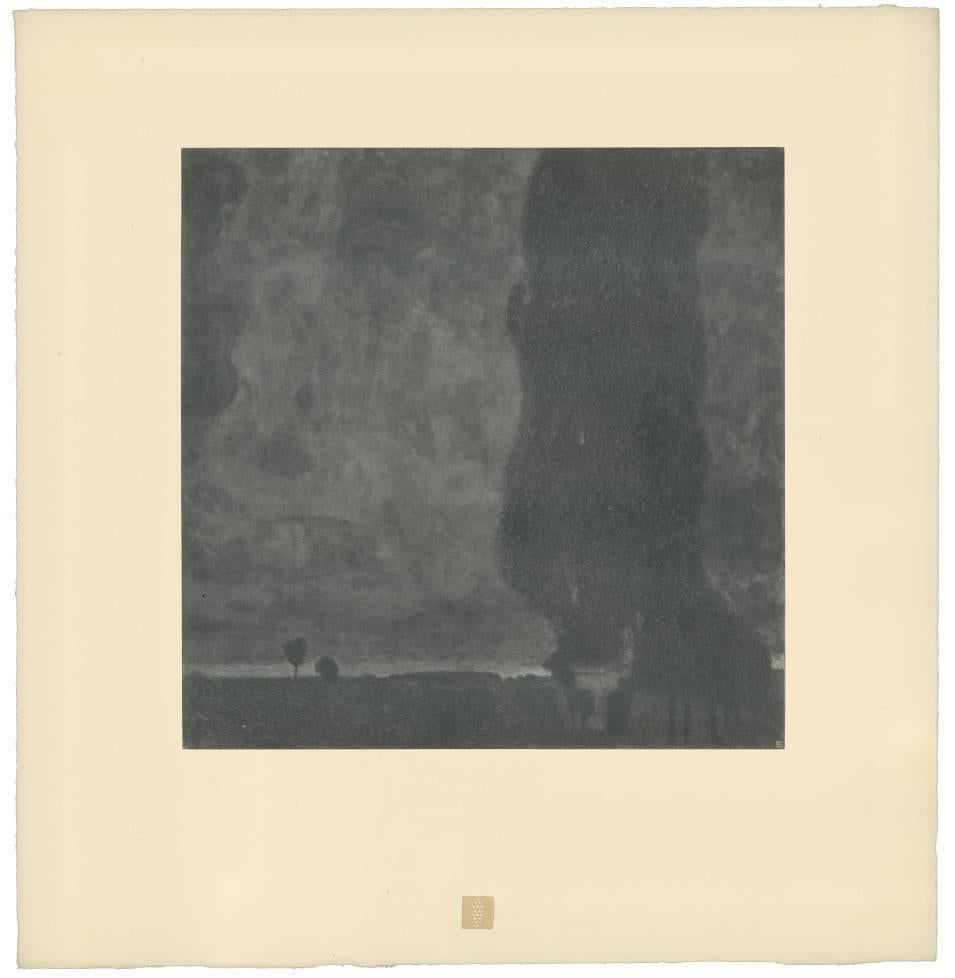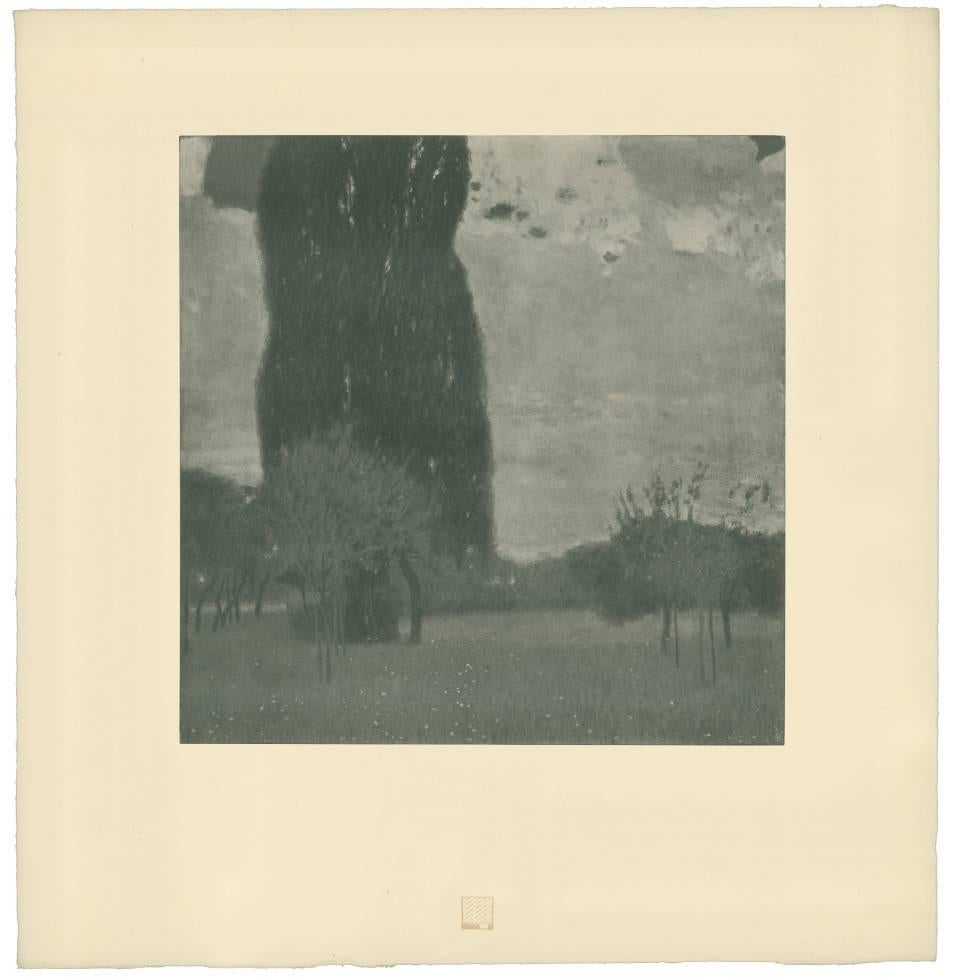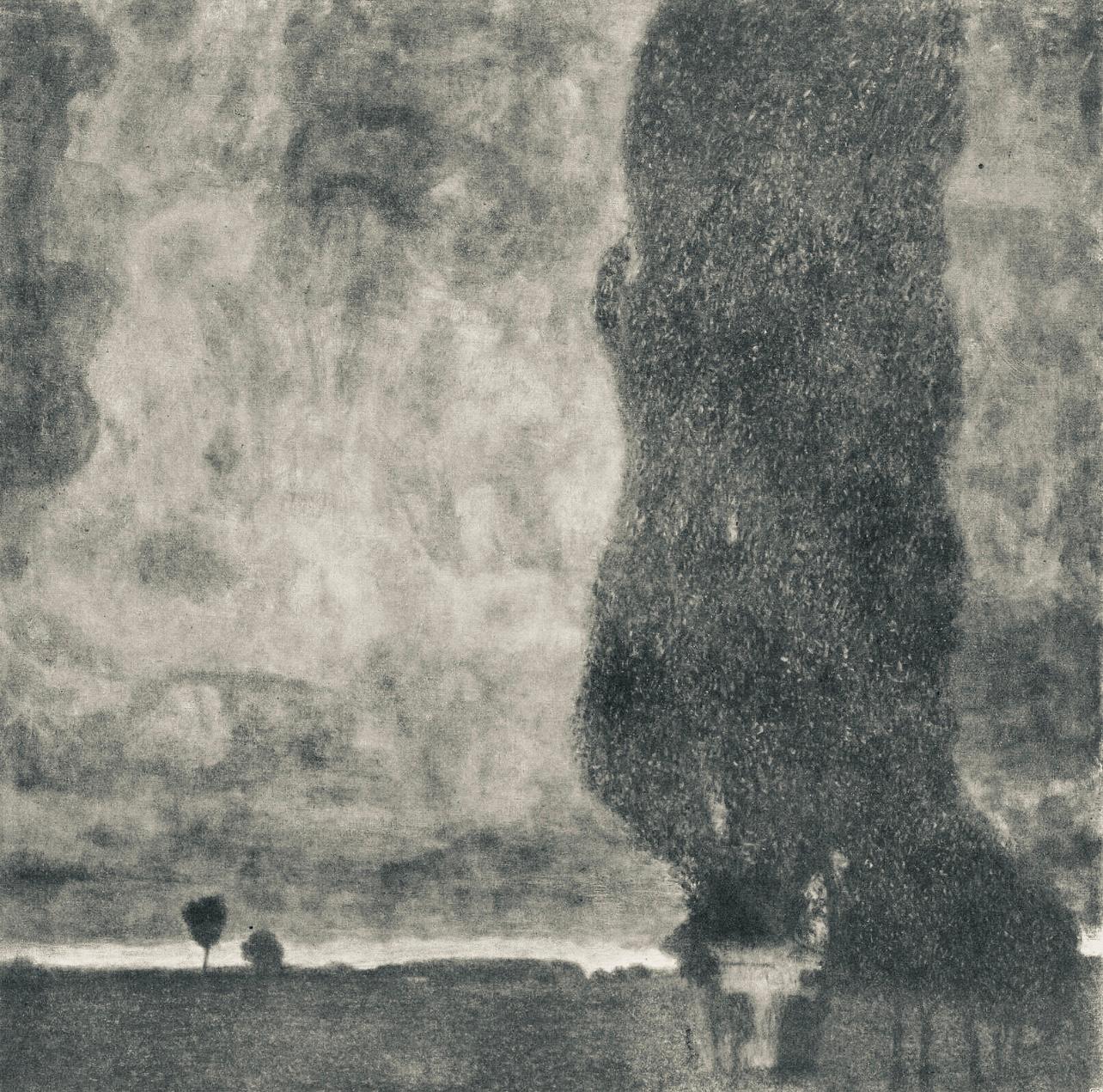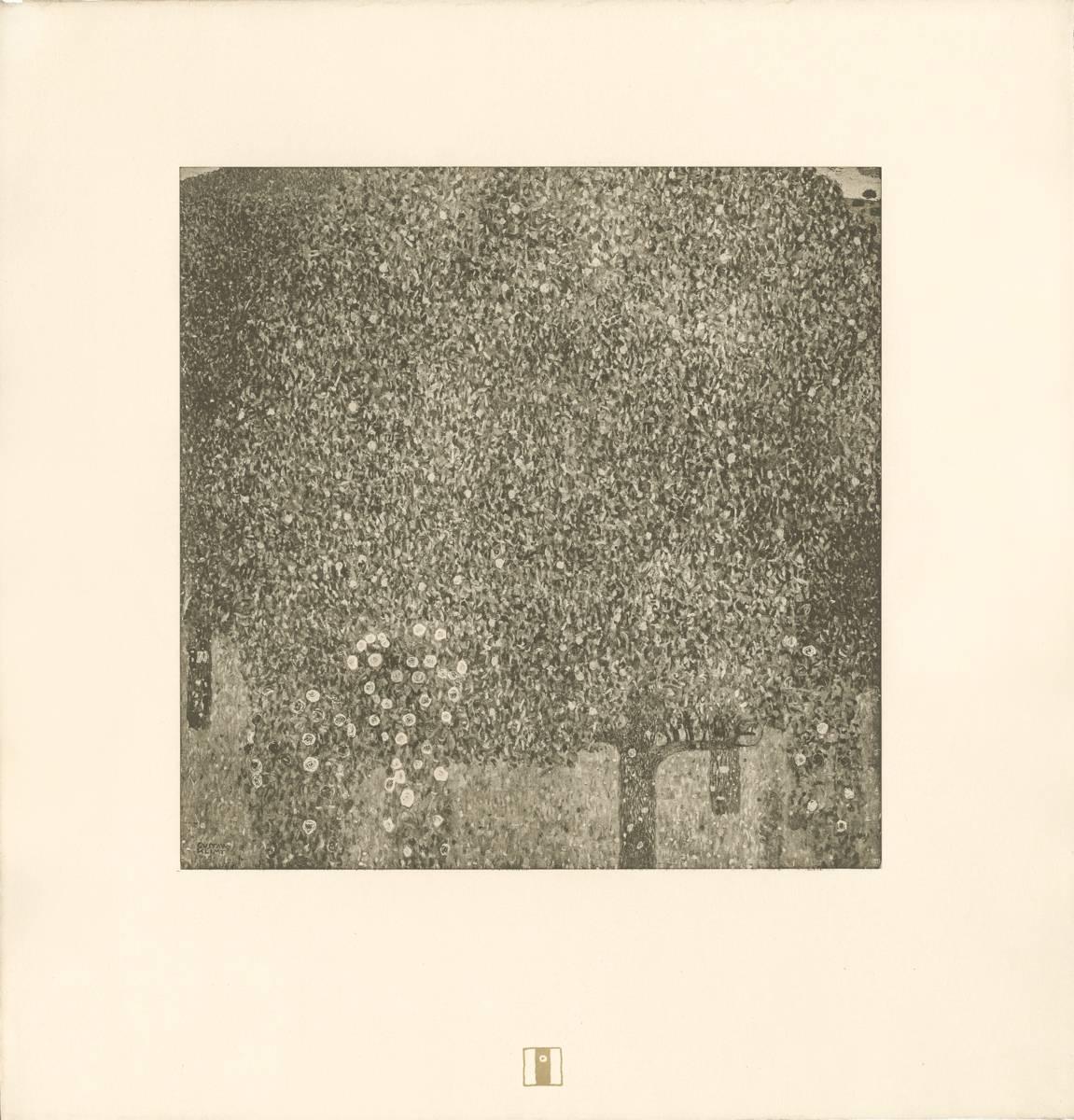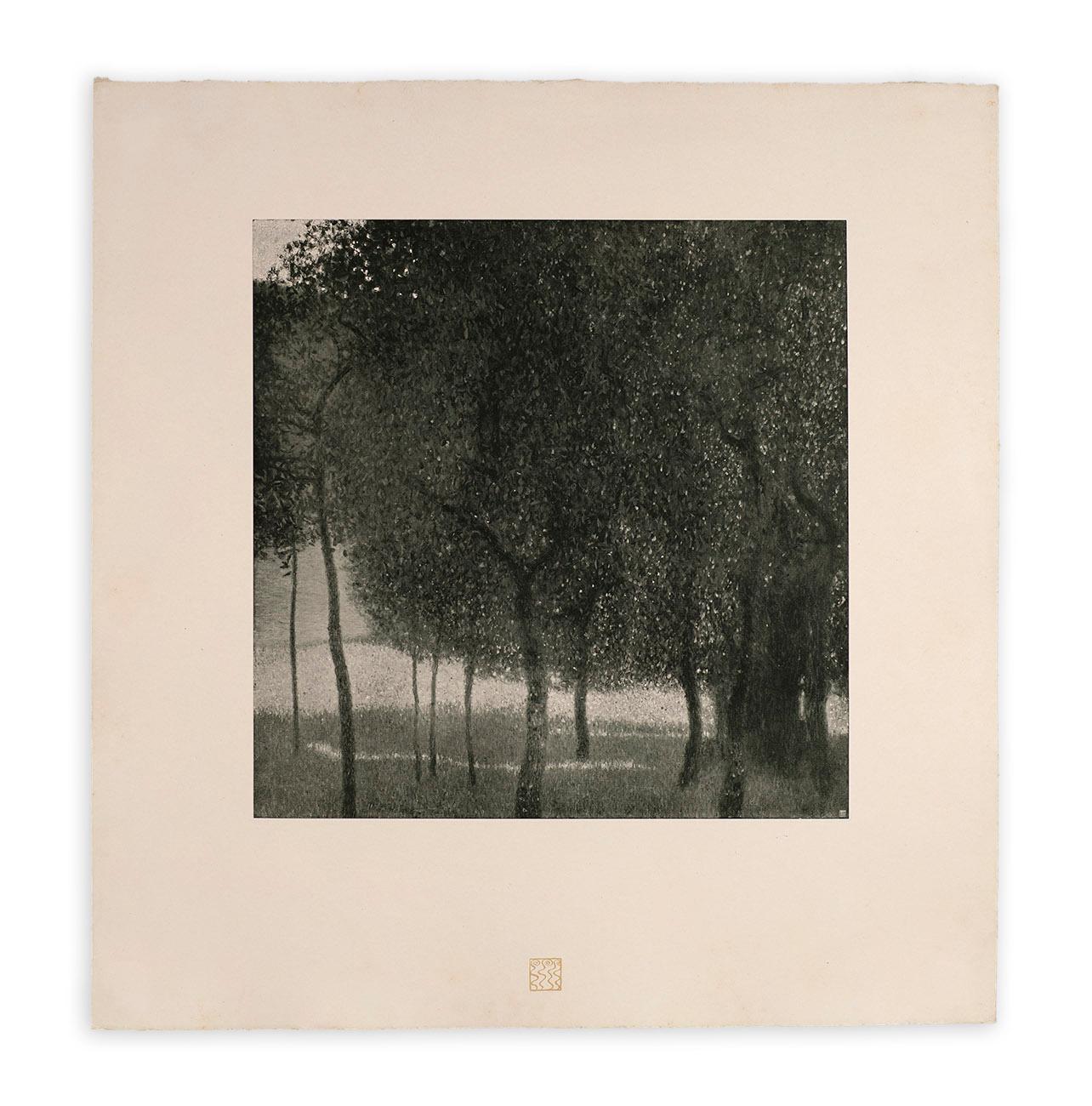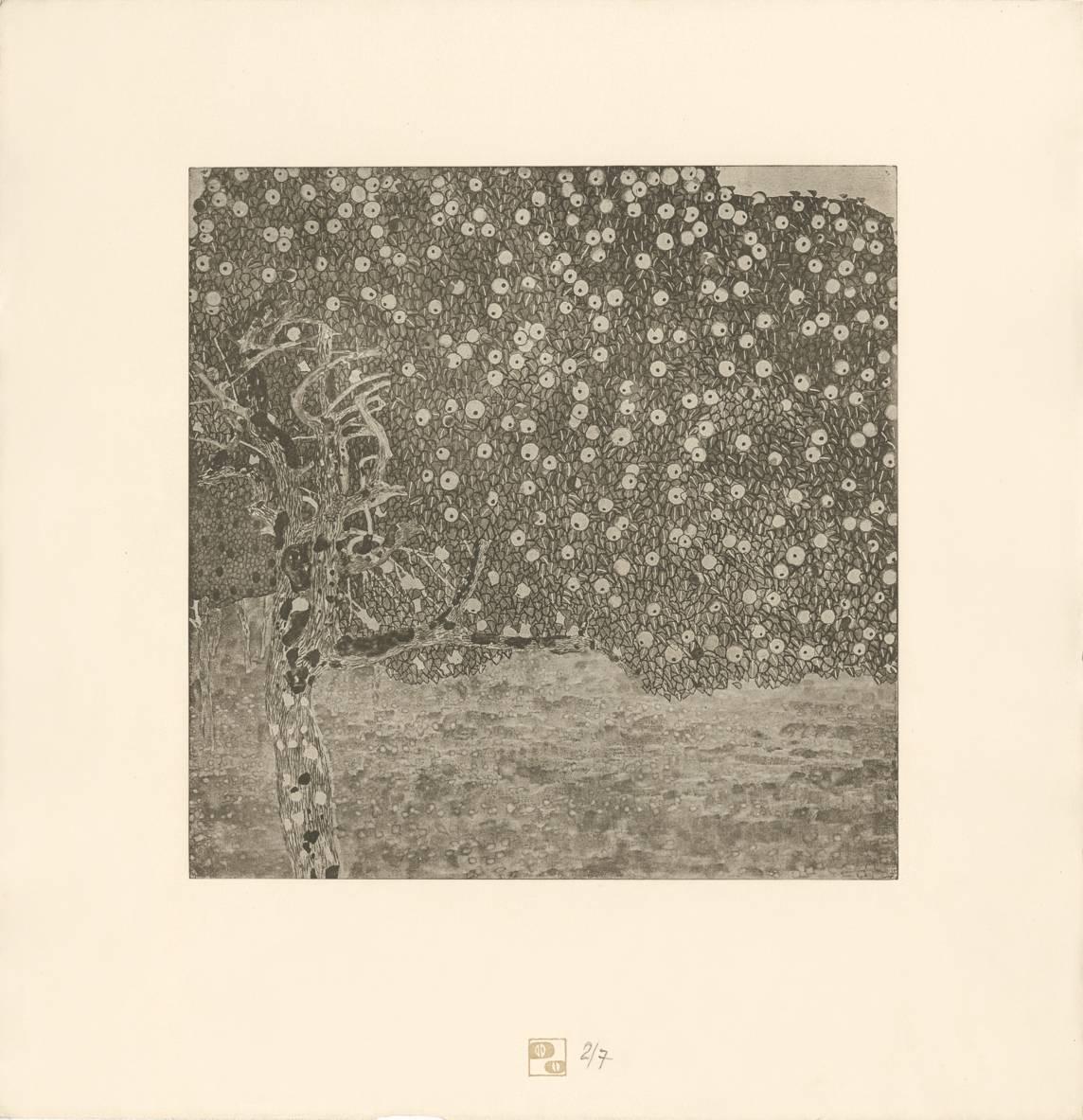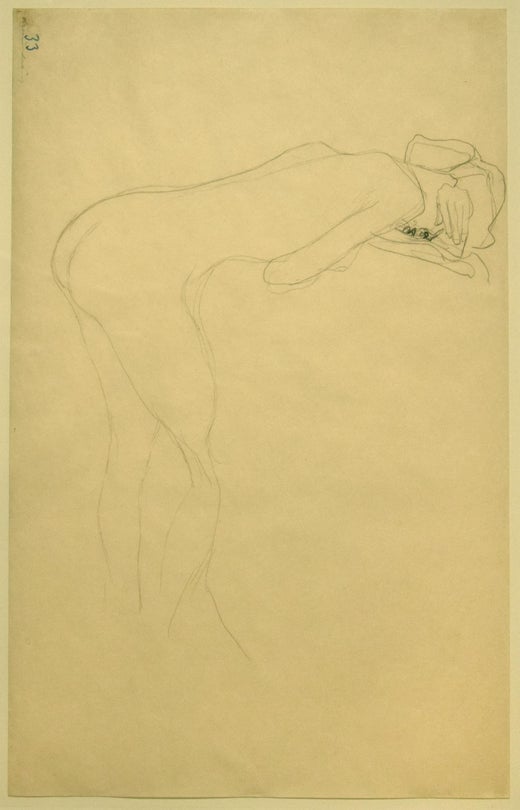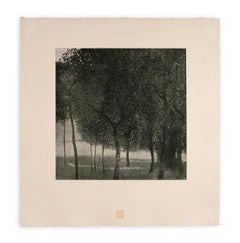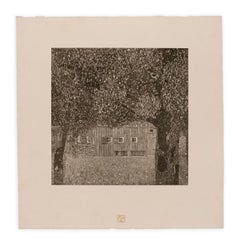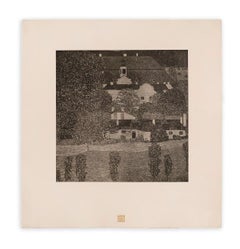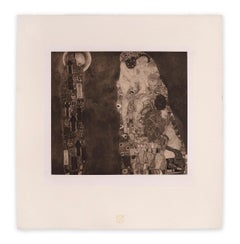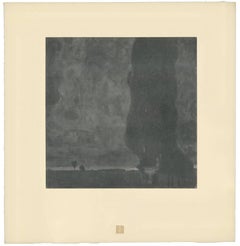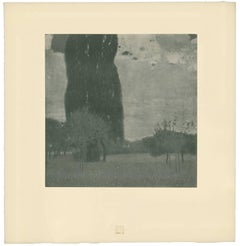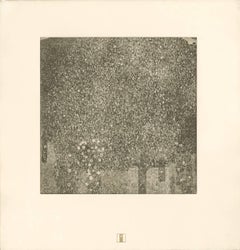Items Similar to Thunderstorm (The Large Poplar II) by Gustav Klimt, Das Werk lifetime collotype
Want more images or videos?
Request additional images or videos from the seller
1 of 6
Gustav KlimtThunderstorm (The Large Poplar II) by Gustav Klimt, Das Werk lifetime collotype1908-1914
1908-1914
$2,900
£2,218.73
€2,537.46
CA$4,129.35
A$4,472.58
CHF 2,368.88
MX$54,111.51
NOK 29,780.44
SEK 27,761.70
DKK 18,950.92
About the Item
Original collotype created from Gustav Klimt’s Approaching Thunderstorm (The Large Poplar II), painted in 1903. Published and edited by Verlag H.O. Miethke and printed by k.k. Hof- und Staatsdruckerei, Vienna, in an edition of 300.
Between 1908 and 1914, H.O. Miethke published Das Werk Gustav Klimts, a folio of collotypes representing Gustav Klimt’s most notable works leading up to 1913. Klimt’s original oil paintings were painstakingly reproduced as collotypes on a handmade, deckled-edge cream wove paper using a complex gravure process overseen by master technicians as well as the artist himself. Each image presented in the folio was assigned its own unique signet, which was designed by Klimt and struck below the image using a technique similar to letterpress. The signet corresponded to a matching signet in the justification page which detailed the piece’s size, location, and owner.
Published under the artist’s direct supervision, this series allowed Klimt, who had completely divorced himself from public commissions following the outcry from his University of Vienna paintings, to more effectively present his artworks to institutions and patrons across the world. A testament to the masterful design and printmaking demonstrated by Das Werk Gustav Klimts, Emperor Franz Joseph himself purchased the first copy of the folio.
Klimt’s The Swamp is an extraordinary example of the collotype process, capturing the superb resolution of the original 1900 oil painting.
Century Guild has curated collections of Gustav Klimt’s printed works on paper for over twenty years, and this artwork arrives accompanied by a certificate of authenticity. Please contact us directly if you’d like to learn more about this artwork.
- Creator:Gustav Klimt (1862 - 1918, Austrian)
- Creation Year:1908-1914
- Dimensions:Height: 18 in (45.72 cm)Width: 18.5 in (46.99 cm)Depth: 0.1 in (2.54 mm)
- Medium:
- Movement & Style:
- Period:
- Condition:Exceptional condition commensurate with age. Image is pristine and will display beautifully.
- Gallery Location:Chicago, IL
- Reference Number:1stDibs: LU1493210686732
Gustav Klimt
Gustav Klimt was an Austrian symbolist painter and a prominent member of the Vienna Secession movement. Klimt's primary subject was the female body and his works are mostly erotic in nature.
About the Seller
5.0
Vetted Professional Seller
Every seller passes strict standards for authenticity and reliability
Established in 1999
1stDibs seller since 2021
42 sales on 1stDibs
- ShippingRetrieving quote...Shipping from: Chicago, IL
- Return Policy
More From This Seller
View AllFruit Trees by Gustav Klimt, Das Werk lifetime landscape collotype, 1908-1912
By Gustav Klimt
Located in Chicago, IL
Original collotype created from Gustav Klimt’s Impressionist Fruit Trees landscape, painted in 1901. Published and edited by Verlag H.O. Miethke and printed by k.k. Hof- und Staatsdruckerei, Vienna, in an edition of 300.
Between 1908 and 1914, H.O. Miethke published Das Werk Gustav Klimts...
Category
Early 1900s Vienna Secession Prints and Multiples
Materials
Paper
Farmhouse in Buchberg by Gustav Klimt, Das Werk lifetime collotype, 1908-1912
By Gustav Klimt
Located in Chicago, IL
Original collotype created from Gustav Klimt’s Farmhouse in Buchberg (Upper Austrian Farmhouse), painted in 1911. Published and edited by Verlag H.O. Miethke and printed by k.k. Hof- und Staatsdruckerei, Vienna, in an edition of 300.
Between 1908 and 1914, H.O. Miethke published Das Werk Gustav Klimts...
Category
Early 1900s Vienna Secession Prints and Multiples
Materials
Paper
Schloss Kammer Lake Attersee II by Gustav Klimt, Das Werk collotype, 1908-1912
By Gustav Klimt
Located in Chicago, IL
Original collotype created from Gustav Klimt’s Schloss Kammer on Lake Attersee II (Das Werk Gustav Klimts), originally painted in 1909. Publishe...
Category
Early 1900s Vienna Secession Prints and Multiples
Materials
Paper
Death and Life by Gustav Klimt, Das Werk lifetime collotype, 1908-1912
By Gustav Klimt
Located in Chicago, IL
Original collotype created from Gustav Klimt’s Death and Life, painted in 1908. Published and edited by Verlag H.O. Miethke and printed by k.k. Hof- und St...
Category
Early 1900s Vienna Secession Prints and Multiples
Materials
Paper
The Swamp by Gustav Klimt, Das Werk lifetime landscape collotype, 1908-1912
By Gustav Klimt
Located in Chicago, IL
Original collotype created from Gustav Klimt’s The Swamp, painted in 1900. Published and edited by Verlag H.O. Miethke and printed by k.k. Hof- und Sta...
Category
Early 1900s Vienna Secession Prints and Multiples
Materials
Paper
Farm Garden Sunflowers by Gustav Klimt, Das Werk lifetime collotype, 1908-1912
By Gustav Klimt
Located in Chicago, IL
Original collotype created from Gustav Klimt’s Farm Garden With Sunflowers, painted in 1913. Published and edited by Verlag H.O. Miethke and printed by k.k. Hof- und Staatsdruckerei, Vienna, in an edition of 300.
Between 1908 and 1914, H.O. Miethke published Das Werk Gustav Klimts...
Category
Early 1900s Vienna Secession Prints and Multiples
Materials
Paper
You May Also Like
H.O. Miethke Das Werk folio "The Great Poplar II (Thunderstorm)" collotype print
By Gustav Klimt & K.K. Hof-und Staatsdruckerei
Located in Palm Beach, FL
DAS WERK GUSTAV KLIMTS, a portfolio of 50 prints, ten of which are multicolor collotypes on chine colle paper laid down on hand-made heavy cream wove paper with deckled edges; under ...
Category
Early 1900s Vienna Secession Landscape Prints
Materials
Paper
H.O. Miethke Das Werk folio "The Great Poplar I" collotype print
By Gustav Klimt & K.K. Hof-und Staatsdruckerei
Located in Palm Beach, FL
DAS WERK GUSTAV KLIMTS, a portfolio of 50 prints, ten of which are multicolor collotypes on chine colle paper laid down on hand-made heavy cream wove paper with deckled edges; under ...
Category
Early 1900s Vienna Secession Landscape Prints
Materials
Paper
Gustav Klimt, Thunderstorm, from The Work of Gustav Klimt, 1918 (after)
By Gustav Klimt
Located in Southampton, NY
This exquisite heliogravure and collotype after Gustav Klimt (1862–1918), titled Gewitter (Thunderstorm), from the folio Das Werk von Gustav Klimt (The Work of Gustav Klimt), origina...
Category
1910s Symbolist Figurative Prints
Materials
Lithograph
$23,996 Sale Price
20% Off
Free Shipping
H.O. Miethke Das Werk folio "Rose" collotype print
By Gustav Klimt & K.K. Hof-und Staatsdruckerei
Located in Palm Beach, FL
DAS WERK GUSTAV KLIMTS, a portfolio of 50 prints, ten of which are multicolor collotypes on chine colle paper laid down on hand-made heavy cream wove paper wi...
Category
Early 1900s Vienna Secession Landscape Prints
Materials
Paper
H.O. Miethke Das Werk folio "Golden Apple Tree" collotype print
By Gustav Klimt & K.K. Hof-und Staatsdruckerei
Located in Palm Beach, FL
DAS WERK GUSTAV KLIMTS, a portfolio of 50 prints, ten of which are multicolor collotypes on chine colle paper laid down on hand-made heavy cream wove paper with deckled edges; under ...
Category
Early 1900s Vienna Secession Landscape Prints
Materials
Paper
H.O. Miethke Das Werk folio "Orchard in the Evening" collotype print
By Gustav Klimt & K.K. Hof-und Staatsdruckerei
Located in Palm Beach, FL
DAS WERK GUSTAV KLIMTS, a portfolio of 50 prints, ten of which are multicolor collotypes on chine colle paper laid down on hand-made heavy cream wove paper with deckled edges; under ...
Category
Early 1900s Vienna Secession Landscape Prints
Materials
Paper
